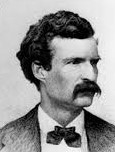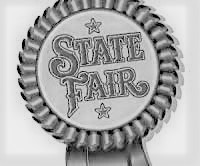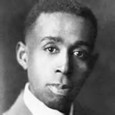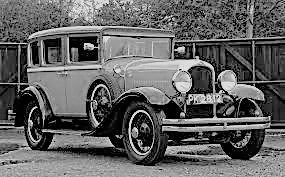|
HAPPY NEW YEAR, INDIANA!
 1825   Scottish factory owner Robert Owen bought 30,000 acres in Southwest Indiana. The property became the site of a town called New Harmony. Owen and his followers worked to create a utopian society in the Posey County community. They established free schools for both boys and girls as well as a library available to all. 1825   Scottish factory owner Robert Owen bought 30,000 acres in Southwest Indiana. The property became the site of a town called New Harmony. Owen and his followers worked to create a utopian society in the Posey County community. They established free schools for both boys and girls as well as a library available to all. |

1869   Mark Twain, early in his career, was on stage at Hamilton’s Hall in Fort Wayne. Not yet having written any of his famous books, he recited portions of his popular short stories, including “The Celebrated Jumping Frog of Calaveras County.” Two days later, he appeared at the Metropolitan Theater in Indianapolis. The humorist left two distinctly different impressions on Hoosier audiences. See “Did You Know?” in the right column.
|

1884   Dr. Mary Hamilton Swindler was born in Bloomington. She earned degrees from Indiana University and Bryn Mawr, where she taught archeology for 37 years. She played a large role in helping launch the careers of young archeologists.  In 1932, she was the first woman appointed to serve as editor of the American Journal of Archeology.
|
 1916   The Indiana State Board of Agriculture met at the Statehouse. They began planning the 1916 State Fair, which would include an exposition commemorating the state’s centennial. Governor Samuel Ralston addressed the group and proposed the construction of a Fine Arts Building on the fairgrounds. 1916   The Indiana State Board of Agriculture met at the Statehouse. They began planning the 1916 State Fair, which would include an exposition commemorating the state’s centennial. Governor Samuel Ralston addressed the group and proposed the construction of a Fine Arts Building on the fairgrounds. |
 1927   John Wesley Hardrick, an artist from Indianapolis, was awarded the prestigious Harmon Foundation Bronze Medal. As a teen, he had studied with Otto Stark at Manual High School. He attended the Herron School of Art, working with William Forsyth. His work was exhibited at the Tanner Galleries in Chicago and the Indianapolis Museum of Art. 1927   John Wesley Hardrick, an artist from Indianapolis, was awarded the prestigious Harmon Foundation Bronze Medal. As a teen, he had studied with Otto Stark at Manual High School. He attended the Herron School of Art, working with William Forsyth. His work was exhibited at the Tanner Galleries in Chicago and the Indianapolis Museum of Art. |
 1928   Over 1,000 Marmon Automobile dealers were in Indianapolis for their annual convention. The car, manufactured in the city, had established a reputation for high quality, medium-priced models with straight-eight engines. The production schedule for 1928 was set at 300 cars per day. The Marmon Company was one of many which had established Indianapolis and Indiana as the center for automakers in the 1920s. 1928   Over 1,000 Marmon Automobile dealers were in Indianapolis for their annual convention. The car, manufactured in the city, had established a reputation for high quality, medium-priced models with straight-eight engines. The production schedule for 1928 was set at 300 cars per day. The Marmon Company was one of many which had established Indianapolis and Indiana as the center for automakers in the 1920s. |
Follow this link to subscribe to Hoosier History Highlights and to view archived editions
Follow us on Instagram: @instatehousetouroffice
|